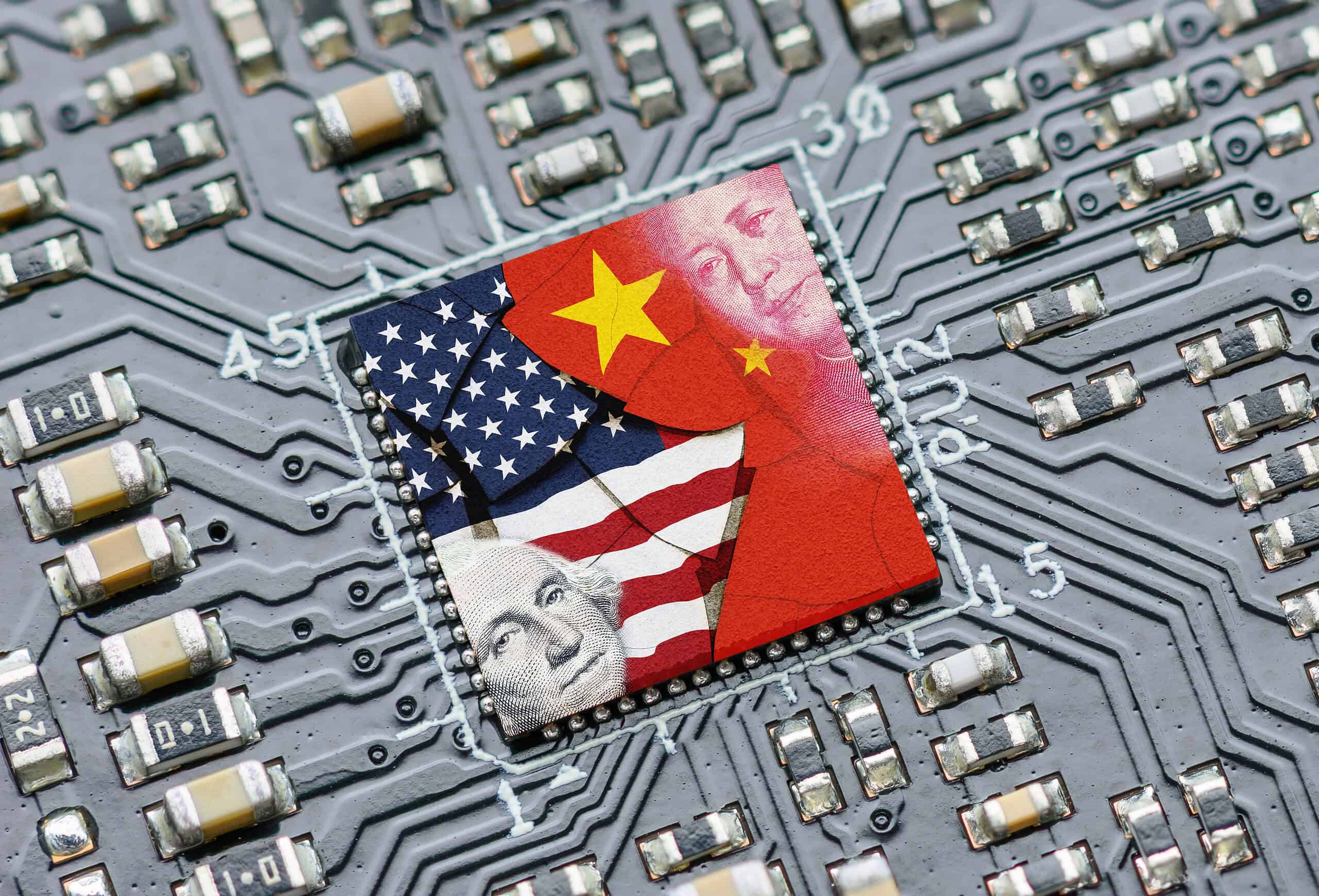The intensifying competition between the United States and China over artificial intelligence (AI) is not merely an extension of their long-standing trade disputes; it is a critical battle that could reshape global power dynamics.
Two recent developments have amplified the significance of this struggle: the war in Ukraine, which has vividly illustrated how AI, particularly in the form of AI-enhanced drones, can be weaponized, underscoring the technology’s lethal potential in modern warfare; and the November 2022 launch of OpenAI’s ChatGPT—a generative AI (GenAI) chatbot that has showcased AI’s capacity to transform nearly every facet of economic and social life.
These advancements have thrust AI into the heart of national security and geopolitical discussions. As the Goldman Sachs Artificial Intelligence blog notes, “While the United States, China, and Russia do not agree on many things, they all acknowledge that AI could reshape the balance of power.” This sentiment is echoed by AI Now, a research institute, which asserts that “AI is now firmly positioned as a critical strategic technology for the geopolitical and economic ambitions of nation-states.”
What makes this AI race particularly compelling is the stark contrast in how the two superpowers approach technological innovation. China’s strategy is characterized by centralized planning, with direct state funding funneling into specific AI projects and the development of national computing centers. In contrast, the US has primarily relied on private enterprises to drive AI advancements, many of which utilize open-source models. Government support in the US has been relatively modest, with few export controls imposed on the industry until recently.

Despite the US’s current leadership in GenAI, Andrew Rogoyski, director of innovation and partnerships at the Surrey Institute for People-Centred Artificial Intelligence at the University of Surrey in Guildford, UK, cautions that this dominance may not be permanent.
“China showed that it is capable of taking a long-term view, something Western nations often struggle to do. This can deliver benefits: China’s increasing dominance of the electric vehicle market, for example,” Rogoyski explains. This long-term strategic thinking could enable China to close the gap and possibly surpass the US in AI capabilities, making the stakes of this rivalry higher than ever.
The U.S. Leads The Race, For Now
Assessing the current state of the US-China AI race is challenging, given the classified nature of much AI development, particularly in autonomous weapons systems. However, when it comes to generative AI, experts like Rogoyski generally agree that the US holds the upper hand at present.
“The US maintains its edge today,” affirms Tara Murphy Dougherty, CEO of Govini, a defense-acquisition software company. The US advantage is rooted in its superior talent pool, robust infrastructure, and access to more GPUs (graphics processing units), which are critical for AI projects. Additionally, according to Dougherty, a vibrant private sector, fueled by significant capital investment, is effectively commercializing and refining AI applications.
Yet, this lead isn’t necessarily secure. Govini’s 2024 National Security Scorecard reveals that China has outpaced the US in AI and machine learning (ML) patents every year since 2021, with more than double the US patents granted in 2023 alone. “This is concerning because patents are the seeds of innovation and a leading indicator that we are slipping behind in the race to develop the most powerful AI,” Dougherty warns.
Although Chinese large language model (LLM) developers are still perceived to be a few years behind Microsoft-backed OpenAI, US firms continue to push the frontier, according to Rebecca Arcesati, lead analyst at the Mercator Institute for China Studies in Berlin. She suggests that the gap may persist, or even widen, adding, “China’s main weakness [is] infrastructure, since the most advanced chips needed to train foundation models are made by US firms and subject to export controls.”
Despite this, China continues to invest heavily in government-funded research and development (R&D). However, Xavier Ferràs, associate dean of the Executive MBA program at Esade Business and Law School in Barcelona, Spain, points out that China’s market and economic systems are less efficient in leveraging these investments.
Govini’s Scorecard also highlights that over the past five years, the US government has committed just over $12 billion to AI-related obligations, most of which have gone into R&D. “As a percentage of the total spend on emerging technologies, this is a minuscule amount that would shock most commercial technologists,” Dougherty observes.
Meanwhile, US-developed open-source AI models, like Meta’s Llama 2 and Llama 3, have inadvertently helped Chinese companies narrow the gap by providing existing architectures that can be leveraged. This has led experts like Rogoyski to suggest that US technologies, especially those with strong defense applications, need tighter licensing and protection to prevent exploitation.
Nestor Maslej, research manager at Stanford University’s Institute for Human-Centered Artificial Intelligence, notes that certain US policies, such as chip export controls, have indeed slowed down Chinese AI development to some extent. “That said,” Maslej adds, “the US should continually evaluate what else it might need to do to maintain its pole position.”
China’s Main Vulnerabilities
China faces its own challenges. Not only does it trail in computer chips, but its strict censorship protocols could eventually lead to data deficits when it comes to developing LLMs. China’s heavily censored internet may prove to be a biased data source for training AI models, for instance. Another potential vulnerability is China’s inability to properly integrate new technology in its economy.
“American analysts and policymakers have substantially overstated China’s ability to diffuse new advances like AI throughout its entire economy,” Jeffrey Ding, assistant professor in the Department of Political Science at George Washington University, says. “For instance, China trails the US in diffusion rates of many digital technologies, such as smart sensors, key industrial software and cloud computing across industrial applications.”

America’s dominance by private enterprise in AI development has given it a key advantage over China.
“Virtually all major industrial AI labs are headquartered in the United States,” adds Maslej. “While China does seem to produce more total research in terms of papers and is leading in patents—accounting for 61.1% of global AI patent origins in 2022—if you look at overall indicators of AI competitiveness, the United States is still clearly ahead.”
Shifting Borders Of Tech And Talent
Others suggest that focusing on the US-China competition in isolation can be misleading. In the 21st Century, technologies evolve globally, often through cross-border collaboration.
“There is much misconception about Chinese firms simply copying their US competitors or doing something wrong,” Arcesati says.
Using existing building blocks, instead of doing everything from scratch, is the norm in machine learning, she notes. “And there are some valid arguments in favor of keeping model weights open, even though the US government is currently evaluating options for restricting [China’s] access to open-source frontier models on security grounds.”
Indeed, the New York Times ran a story in July suggesting that some US-based AI projects are now using Chinese open-source systems as building blocks. The story cites Stanford University’s Llama 3-V project. Notes the Times, “Rather than Chinese developers building atop US technology, US developers built atop Chinese technology.”
Then, too, Chinese talent remains a vital pipeline feeding the United States’ AI research and industry.
A 2023 study by think tank MacroPolo found that, as of 2022, 57% of “elite” AI researchers worked in the US, compared with only 12% in China. At the same time, China was the country of origin for 26% of elite researchers, versus 28% for the US.
“Within US institutions, researchers of American and Chinese origin (based on undergraduate degrees) comprise 75% of the top-tier AI talent, up from 58% in 2019,” notes the study.
Arcesati notes, “The US has historically excelled at attracting top STEM [science, technology, engineering and math] talent from abroad, while China has struggled to do so. But it’s not unimaginable that, because of bad policies in the West that push Chinese talent away, China gains more ground.”
“One of the key levers in this race is how quickly each nation can upskill its broader workforce and use its existing talent to develop more elite practitioners” Govini’s Dougherty says. “Each expert who leaves the US and builds in China tips the scales.”
With Chinese and US talent so entwined, perhaps it’s premature to speak of an “AI arms race,” says Arcesati. She says parts of both the US government and the tech industry “have actually embraced the rhetoric of an AI arms race, with arguments in favor of slowing down China.” The “China threat” has been used by the tech industry as an argument against more regulation, for instance.
“Of course, some US worries are justified,” she adds. “It did make a lot of sense for the US government to try to prevent US tech firms from contributing to surveillance and military applications of AI by the [Chinese Communist Party].”
Potential To Boost Global Wealth
The US-China AI rivalry may not be a zero-sum game. Some believe that its spinoffs could boost global GDP much like the space race did in the previous century.
“Many of the key technologies we have today—the internet, processors, GPS—trace their origins to significant US public R&D efforts during the Cold War era,” says Ferràs, adding that disruptive innovation often “is generated at the intersection between the public and private sectors.”
Goldman Sachs economists Joseph Briggs and Devesh Kodnani, write that genAI could add 1.5 percentage points to global productivity growth over a 10-year period and lift global GDP by 7%, or nearly $7 trillion.
Initial productivity gains will come mainly from automation, meaning some industries will be disrupted more than others. Ripest for automation in the US, the Goldman Sachs economists write, are those sectors “with particularly high exposures in administrative (46%) and legal (44%) professions.”
By comparison, they anticipate low disruption in “physically intensive professions such as construction (6%) and maintenance (4%).”
A Helping Hand For The Unbanked
Others worry that the AI race could cause widespread unemployment, especially in poorer countries.
“The way demographic trends are emerging, there is a real danger that a significant proportion of the global population—amounting to more than 35% by 2070 in North and sub-Saharan Africa and in West Asia—is likely to largely miss out on AI’s positive benefits,” says D.K. Srivastava, an economist and chief policy adviser at Ernst & Young India.
AI’s positive impact will be concentrated, initially, “in a limited number of sectors.” These will include financial services, business services (including IT and consulting services, among others), transport and storage, education, retail trade, health and social work, construction, media, post and telecommunications, and pharmaceuticals, predicts Srivastava.

On the plus side, “The next form of AI, artificial general intelligence (AGI), has the potential to reshape financial services,” according to a World Economic Forum blog in January focusing on the likely effects of AGI in Latin America, “especially for underbanked and unbanked populations.” The blog notes that “AI-powered mobile banking apps have already made significant strides in reaching rural and remote communities,” which gives them access to the broader economic pool.
Still, there are no guarantees that everything will work out equitably. “Count me as a pessimist,” comments Arcesati. “I think that AI has tremendous potential to make the world a better place—be it by making it possible to discover new drugs more quickly or by boosting productivity generally.”
“Unfortunately, I also think—and this is a personal view—that a more just and equal world is very unlikely to materialize within the constraints of the current international political economy paradigm.”
In the end, the winner of the AI race may be the party that does the best job in integrating private and public resources, suggests Esade’s Ferràs. The West has more efficient markets, “but it will win the race only if it complements them with very aggressive public R&D policies to keep companies at the technological frontier.”
Europe has yet to define the relationship it wants with China in the AI realm, Arcesati observes, but “China is simply a player too important to be ignored,” whether one is talking about research collaborations, technology imports and exports, or AI governance.
Overall, “governments around the world need to take AI very seriously indeed and stop treating it as ‘just another tech revolution,’” Rogoyski states. “It is potentially the most powerful technology that humankind will ever invent.”




